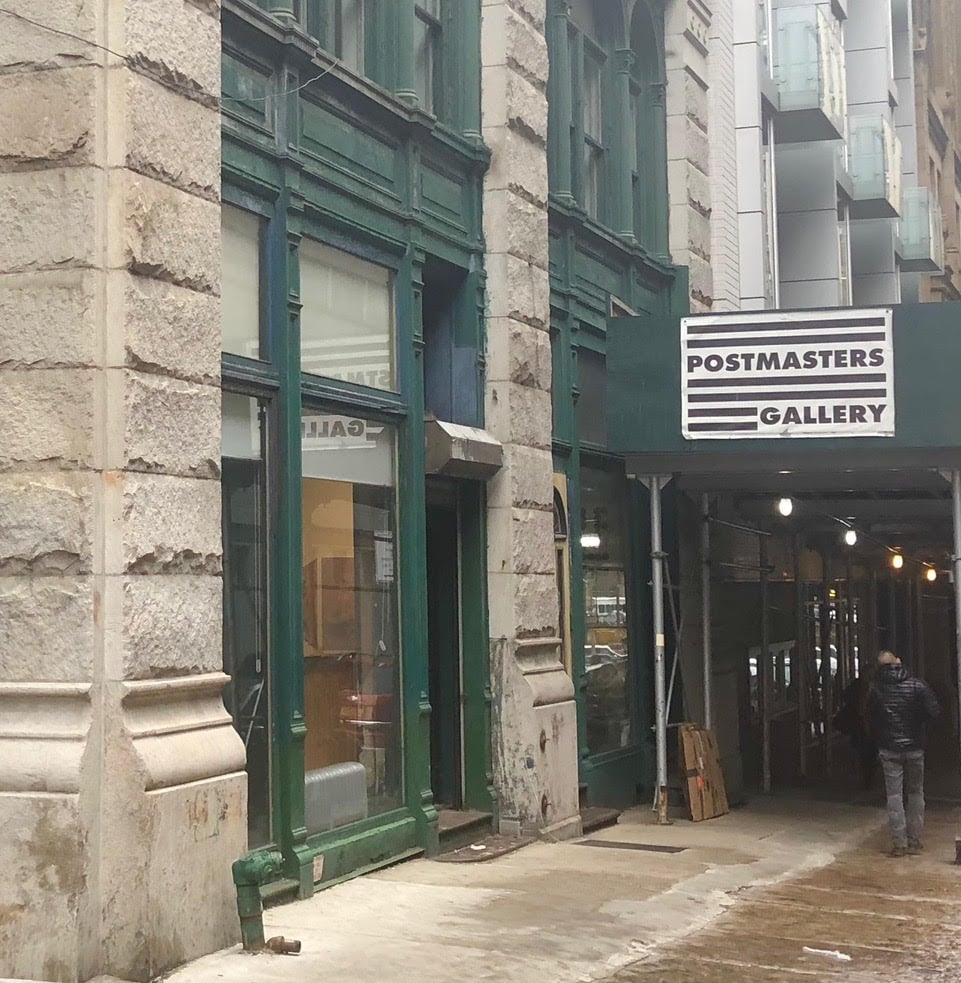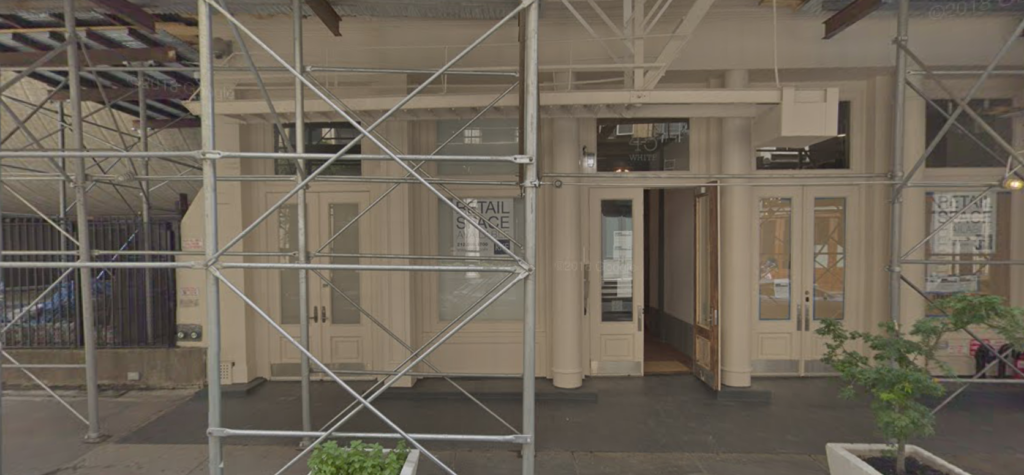Galleries
Chased Out of Chelsea? Try Tribeca! Why Midsize Art Dealers See a Better Future in Robert De Niro’s Backyard
James Cohan, Andrew Kreps, the Journal Gallery, and CANADA are all relocating downtown. Why?

James Cohan, Andrew Kreps, the Journal Gallery, and CANADA are all relocating downtown. Why?

Eileen Kinsella

Magda Sawon, the founder of Postmasters Gallery, never imagined she would be at the forefront of a trend when she moved her contemporary art gallery to Tribeca in 2013 after spending nearly two decades in the heart of Chelsea.
Five years later, it seems a week doesn’t pass without news of another gallery setting up shop in the charming downtown neighborhood, famed for its restaurants and its ties to the independent film industry. (Robert De Niro, a patron of both and son of an AbEx painter, looms large over the area.) Over the past few months, no fewer than five galleries—James Cohan Gallery, Andrew Kreps, the Journal Gallery, R & Company, and CANADA—have opened in or announced plans to relocate to Tribeca.
On Twitter, artist Greg Allen recently joked about the influx: “Last one moving to Tribeca buys @PostmastersNYC dinner.” (“My tombstone will say ‘she was always too early,'” Sawon replied.)
Indeed, even as mega-dealers like David Zwirner, Pace Gallery, and Lehmann Maupin are erecting museum-scale, custom-built spaces in Chelsea, many of their smaller-scale peers are fleeing. The combination of warp-speed real-estate development, a lack of subway access, and flood risk—as demonstrated by the devastating impact of Hurricane Sandy in 2012—is forcing some dealers out of the neighborhood for good.
In recent years, Jonathan Travis, a partner with Redwood Property Group, says he has brokered 11 art and design leases totaling over 60,000 square feet in Tribeca. The neighborhood “has definitely provided an interesting alternative and now there is a very strong critical mass of high-quality dealers,” he says.
Sawon’s migration pattern—and the circumstances behind it—is emblematic of the experience of many midsize New York dealers. Her gallery opened in the East Village in 1984, and four years later she moved it to SoHo back when it was a wide-open haven for artists and dealers. In the late 1990s, after SoHo had become a commercial hotspot and squeezed her out, she moved to Chelsea.
She remained in the same gallery on West 19th Street for 15 years, until her landlord asked for a threefold increase in rent. “That was just unreasonable for a gallery like mine,” she says. “We would have to completely change the DNA of the gallery and what we do.”
So she looked elsewhere. “Like everyone else, we looked on the Lower East Side and Chinatown, but we just didn’t find anything. I was very spoiled space-wise in Chelsea,” she says. Eventually, with the help of some art-world contacts and without the assistance of a real estate agent, Sawon says she stumbled on her current space at 54 Franklin Street.
The new locale has exceeded her expectations. “It’s twice the size of the exhibition space that I had in Chelsea, for less money,” she says. Two large rooms—complete with Corinthian columns—allow her to present separate, simultaneous exhibitions in a space that doesn’t feel corporate or sterile. “It feels like a place where art can live,” she says.

The facade and entrance of Postmasters Gallery on Franklin Street in Tribeca. Image courtesy of Postmasters Gallery.
Dealers have found Tribeca a practical alternative to Chelsea and other New York neighborhoods for a number of reasons. While the Chelsea arts district is several long blocks away from the nearest subway, “this part of Tribeca is one of the most subway accessible in Manhattan,” notes Jonathan Travis or Redwood Property Group.
Another strike against Chelsea? Its proximity to the Hudson River, which proved devastating during the storm surge of Hurricane Sandy in late 2012, when some galleries and storage units were left up to five feet underwater. Crucially, art insurance companies are no longer willing to insure art that is stored below ground in the neighborhood, according to Travis.
By contrast, Tribeca is located outside the flood zone. “Galleries can essentially double their footprint for very similar per-square-foot rates,” he says, by using the lower level floor for storage and the ground floor for exhibition space. Rents in both neighborhoods are currently averaging around $90 per square foot, he estimates.
And since Tribeca is a landmarked district, there is less chance of buildings being razed and redeveloped, as is happening everywhere in Chelsea. Several dealers and residents we spoke to expressed fatigue over the numerous, sterile-feeling steel-and-glass cubes on the rise there.
Art dealer James Cohan, who plans to move his gallery to 50 Walker Street this fall after 17 years in Chelsea, says his new neighborhood reminds him “of the days of working in Soho and being in spaces that had historic bone structure.” (He served as director of John Weber Gallery and Paula Cooper in SoHo for over a decade in the 1980s.)
Cohan’s Chelsea lease came to an end around the same time his landlord told him that he was planning to raze the property to build a nine-story building in its place. Like other dealers we spoke to, Cohan initially considered moving to another space in Chelsea, but says “we were unable to find space that was both aesthetically and economically feasible. It’s really become a matter of the quality of the spaces in these new buildings and none were of great interest to us.”
Furthermore, his artists were on board with the move. “I’ve received uniform support in so far as the artists find the new space has great character,” he says. The first show in the new gallery will be a solo presentation of work by Josiah McElheny.
Similarly, dealer and longtime Chelsea denizen Andrew Kreps said he was not in a position to renew his lease because his landlord, the Dia Art Foundation, now plans to convert it into exhibition space. “Chelsea has gone through massive changes in the last 15 years,” Kreps told artnet News. “It’s sort of morphing into another Hudson Yards,” he says, referring to the hub of real estate development a few blocks north. He also watched as friends and colleagues exited the neighborhood, including Anton Kern, now in Midtown, and Stefania Bortolami, who is now in Tribeca.
Swayed by Tribeca’s lower rents and growing concentration of galleries, Kreps is now planning to open a two-floor, 10,000-square-foot space at 22 Cortlandt Alley with a show of work by Roe Ethridge in May. He also recently began operating another space in Tribeca at 55 Walker, the former home of the nonprofit Artists Space, in collaboration with Bortolami and gallery Kaufmann Repetto.
Some Chelsea landlords are already feeling the impact of this gallery exodus. David Graff, a commercial real estate specialist at Compass, confirms Chelsea rents have dipped anywhere from 25 percent to 40 percent in recent years. He recently negotiated a lease for a gallery moving from an upper floor of a Chelsea building into a ground-floor space that he describes as “deeply discounted,” and notes another space on West 23rd Street has been empty for roughly a year and a half.
Meanwhile, a new tenant just moved into a space on Eighth Avenue for $11,000 a month, $4,000 less than its predecessor paid. “We had to accept the fact that retail market there has changed dramatically,” Graff said. “It’s better to have a tenant paying low rent for a short term, and after five years, maybe hope the market has changed back in the other direction.”

The facade of 43–45 White Street, where Schiff Fine Art and the Journal Gallery will be located. Photo from Google Maps.
And it’s not just galleries that are flocking to Tribeca—other arts businesses are, too. Top art advisor Lisa Schiff has just signed a 10-year lease on a two-floor, 1,300-square-foot storefront at 45 White Street (conveniently, the Journal Gallery will be nestled right next door). The space will not operate like a gallery, but serve as a creative hub and showroom. Schiff is a longtime resident of the neighborhood, having spent the last 20 years there.
She has made numerous new friends in the area thanks to the school her son attends, but notes that none is an art collector—yet. “I sense that there is a lot of education and cultivation to do with members of the community and I would love to help,” she says. “Not so much to turn them into my clients—there are only so many collectors an art advisor can work with—but to help introduce people to the art world in a way that doesn’t freak them out. Chelsea blocks are confusing and overwhelming now. The Tribeca geography is tightly packed so you can cruise a few blocks and hit a vast array of different galleries in one go.”